Dashi is the basic Japanese soup stock used in many Japanese dishes. Learn how to make Awase Dashi at home with umami-packed ingredients like kombu (dried kelp) and katsuobushi (dried bonito flakes).

When you decide to make Japanese food, you will realize that a lot of recipes require dashi, Japanese soup stock.
With this unfamiliar ingredient, you may think Japanese food is hard to replicate at home. On the contrary, dashi is actually the easiest soup stock anyone can make from scratch as it requires only 1-2 ingredients and 20-minute prep time. This post shows you how you can make Awase Dashi using a combination of ingredients. Once you learn the ins and outs of dashi making, you’ll be ready to tackle Japanese cooking with a breeze.
Table of Contents
What is Dashi?
Dashi (だし, 出汁) is Japanese soup stock that builds the bases for many of your favorite Japanese dishes like miso soup, chawanmushi, ramen, and shabu shabu. It is the essence of authentic Japanese flavor, and it tells the dishes apart if other substitutions are being used in place of the soup stock. And what defines dashi is the use of carefully selected ingredients like kombu, bonito flakes, shiitake mushrooms, and anchovies, and each ingredient is uniquely Japanese.
In general, there are five different types of dashi (two are vegan). Scroll down to see 5 different types or check out my Ultimate Dashi Guide. When we say “dashi” in Japan, it usually implies Awase Dashi because it’s the most commonly used stock.
Awase Dashi (合わせだし) is made from a combination of kombu (dried kelp) and katsuobushi (dried bonito flakes), and it’s the seafood-based stock. *Awase (合わせ) means “to combine”, “mixed”, or “together.”
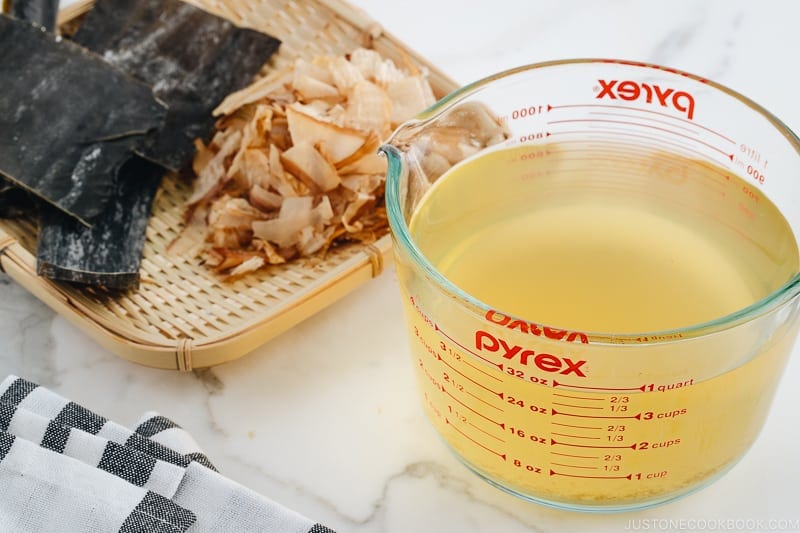
How to Make All-Purpose Basic Dashi
The First Dashi
The base of Awase Dashi is a vegan Kombu Dashi made from dried kelp. You can cold brew or hot brew kombu to make the dashi. Then you would add dried bonito flakes to the kombu dashi. This makes the stock more enriched. When you make dashi from the spent kombu and katsuobushi, it’s called Ichiban Dashi (一番だし). It’s basically the first pure dashi.
The Second Dashi
Niban Dashi (二番だし), or the second dashi is made from the spent kombu and katsuobushi, which you reserved from making Ichiban Dashi. Niban Dashi is a lighter, less intense dashi, yet still provides a great umami flavor despite the previously used ingredients.
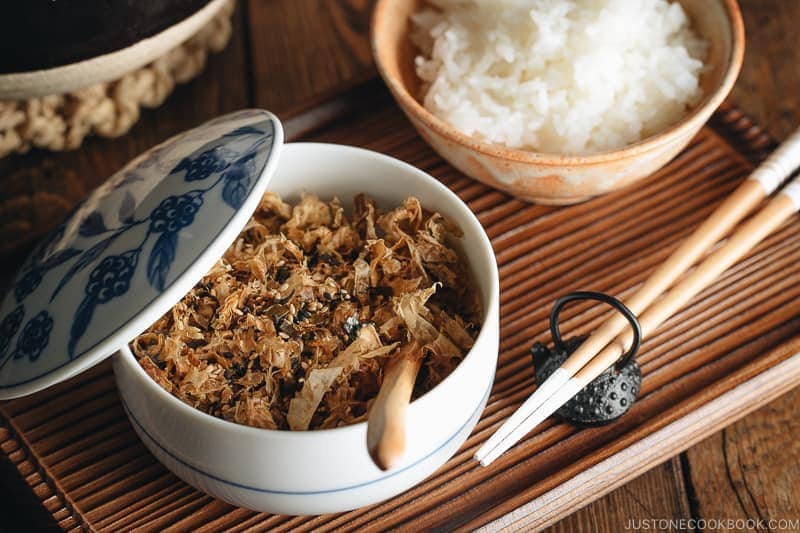
Do we really need to make dashi twice?
At a regular household, we make such a small amount of dashi that it’s not very efficient to make both Ichiban Dashi and Niban Dashi. My suggestion is to make very good Ichiban Dashi and utilize the used kombu and katsuobushi to make Homemade Furikake (rice seasoning) and Kombu Tsukudani (simmered kombu) after collecting enough used kombu and katsuobushi. This way, there will be no waste, and you get another side dish to accompany your meal.
So then who makes Niban Dashi? Japanese restaurants make a huge batch of dashi daily. They use Ichiban Dashi for dishes like Clear Soups (Osumashi おすまし) and Chawanmushi, which require the pure and maximum amount of umami from the dashi ingredients. They typically use Niban Dashi for simmered food (Nimono) and miso soup, which doesn’t require much flavor from the soup stock.
Dashi Shortcut
Sometimes life happens and you just don’t have 20 minutes to make dashi from scratch. On those occasions, you can use Dashi Packet or Dashi Powder.
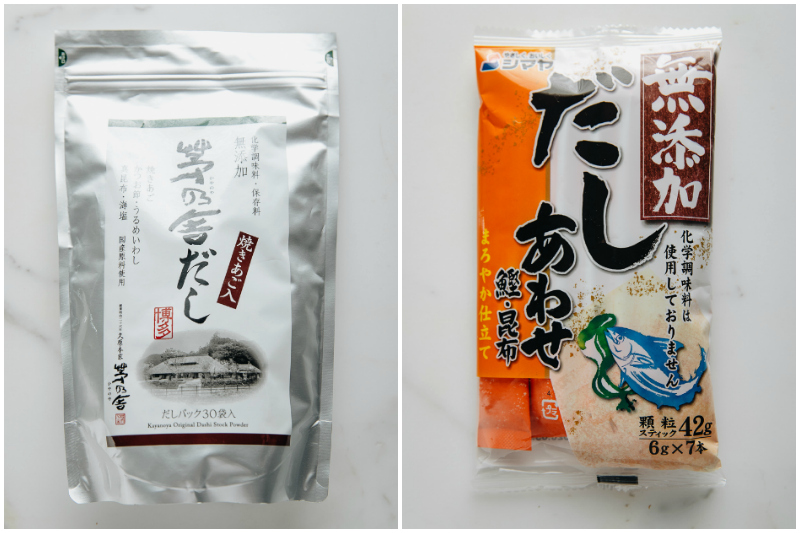
I love using Kayanoya Dashi Packet (left) and Shimaya Dashi Powder (right), which are made without artificial additives. You can purchase them at Japanese grocery stores or on Amazon:
The instructions (recipes) for how to use them can be found in the Dashi Packet post and Dashi Powder post.
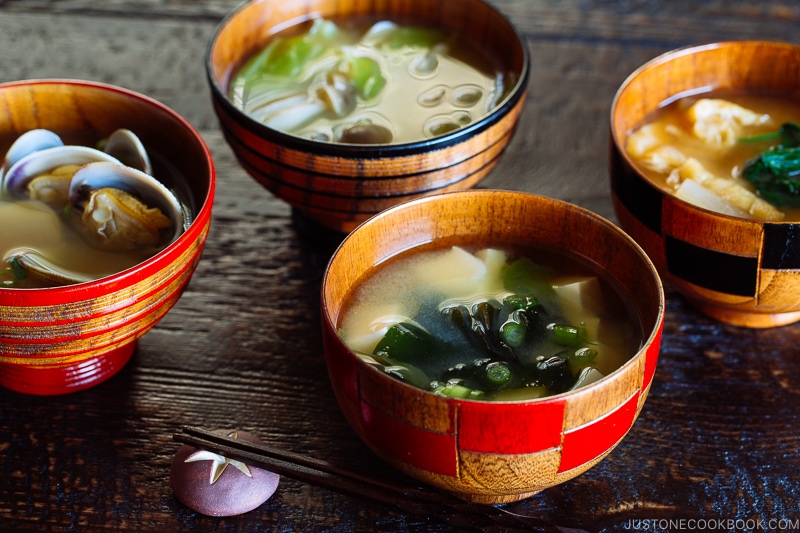
Easy & Delicious Recipes Using Dashi
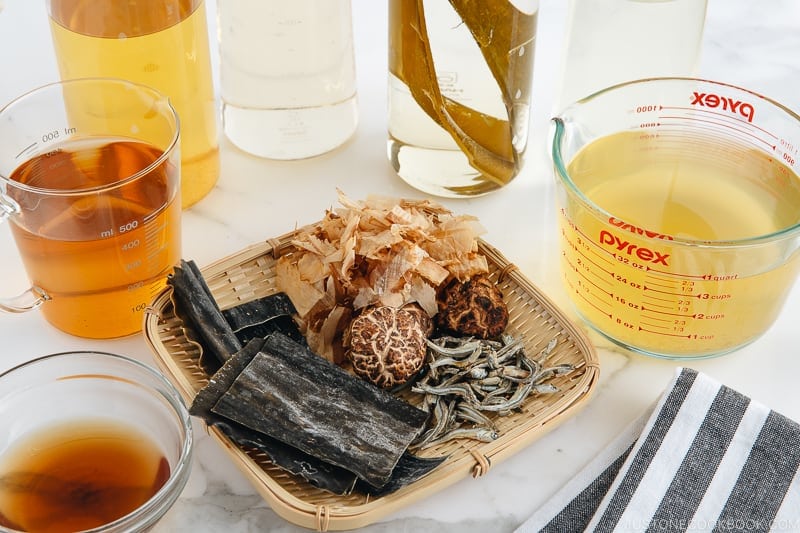
The Ultimate Dashi Guide
Dashi plays an important role as a flavor enhancer in Japanese cooking, so you don’t need to season the food with too much salt, fat, and sugar. Rich in minerals and other vitamins, dashi is considered a healthy ingredient in our daily diet.
There are six different types of dashi you can use in Japanese cooking, including vegetarian and vegan dashi (*).
- Awase Dashi – a stock made from a combination of dried kelp + bonito flakes
- Kombu Dashi * – a stock made from dried kelp
- Katsuo Dashi – a stock made from dried bonito flakes
- Iriko Dashi – a stock made from dried anchovies/sardines
- Shiitake Dashi * – a stock made from dried shiitake mushrooms
- Vegan Dashi * – a stock made from dried shiitake mushrooms and kombu
If you are new to different types of dashi, check out my Ultimate Dashi Guide.
Wish to learn more about Japanese cooking? Sign up for our free newsletter to receive cooking tips & recipe updates! And stay in touch with me on Facebook, Pinterest, YouTube, and Instagram.
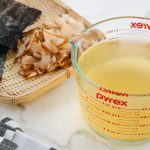
Awase Dashi (Japanese Soup Stock)
Video
Ingredients
- 1 piece kombu (dried kelp) (10 g; 4 x 4 inches, 10 x 10 cm per piece)
- 1 cup katsuobushi (dried bonito flakes) (packed; 10 g)
- 4 cups water
Instructions
Before You Start…
- Sometimes life happens and you just don‘t have 20 minutes to make dashi from scratch. On those occasions, you can use a Dashi Packet or Dashi Powder.
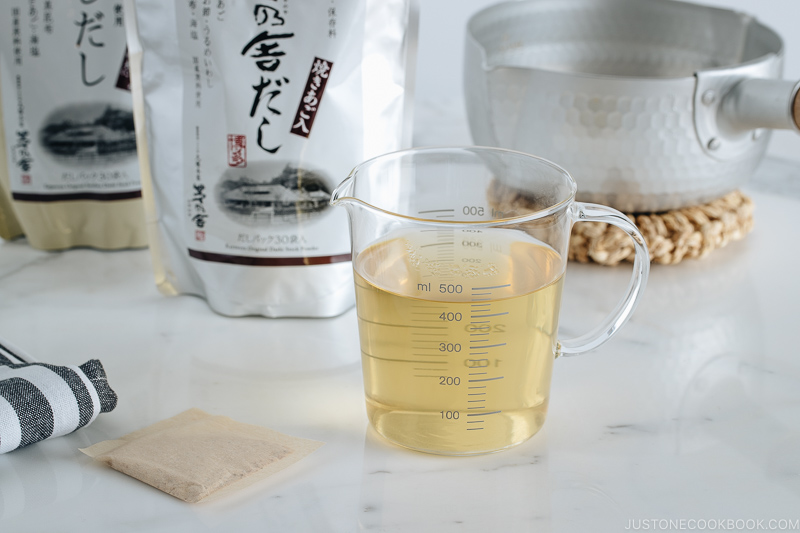
- Gather all the ingredients. Most Japanese recipes would say to gently clean the kombu with a damp cloth. However, these days, kombu is quite clean, so just make sure it doesn't have any mold spots and it‘s ready to use. Do not wash or wipe off the white powdery substance, as it has lots of umami.
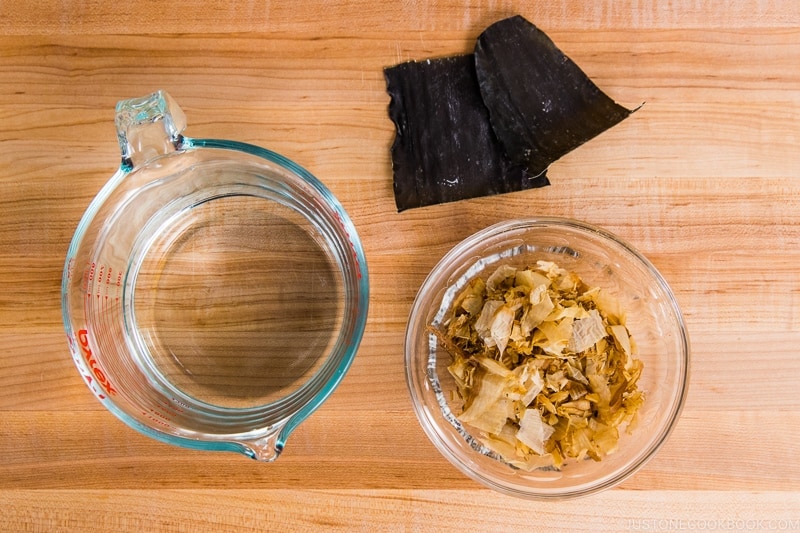
- Make several slits in 1 piece kombu (dried kelp) to release more flavor.
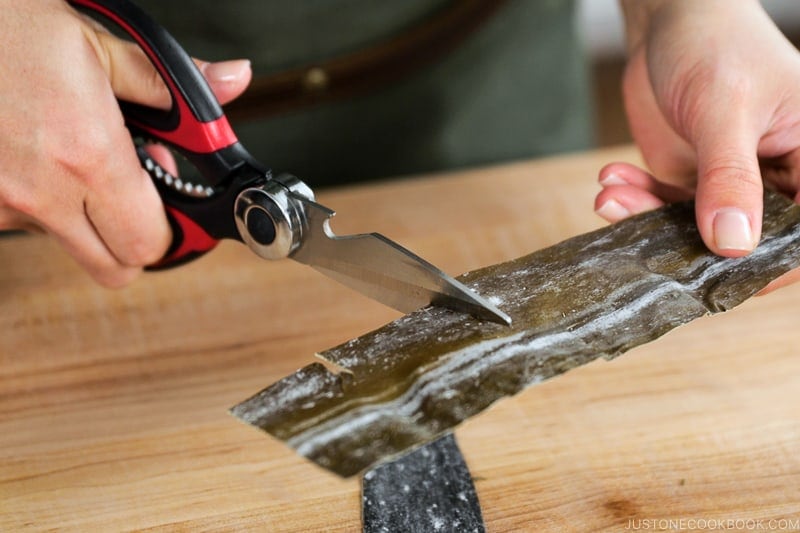
To Make the Cold Brew Kombu Dashi Ahead of Time (Optional)
- Put 4 cups water and the kombu in a large bottle and let it steep on the counter for 2–3 hours in the summertime and 4–5 hours in the wintertime. You can also cold brew the kombu dashi overnight in the refrigerator.
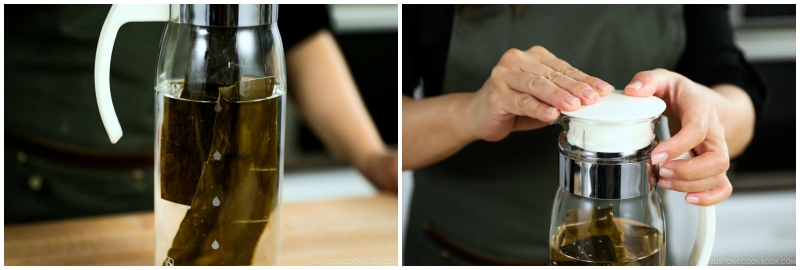
To Make the Awase Dashi
- Add the kombu and water to a medium saucepan. If you have cold brew Kombu Dashi (previous step), add the Kombu Dashi and hydrated kombu to the saucepan.
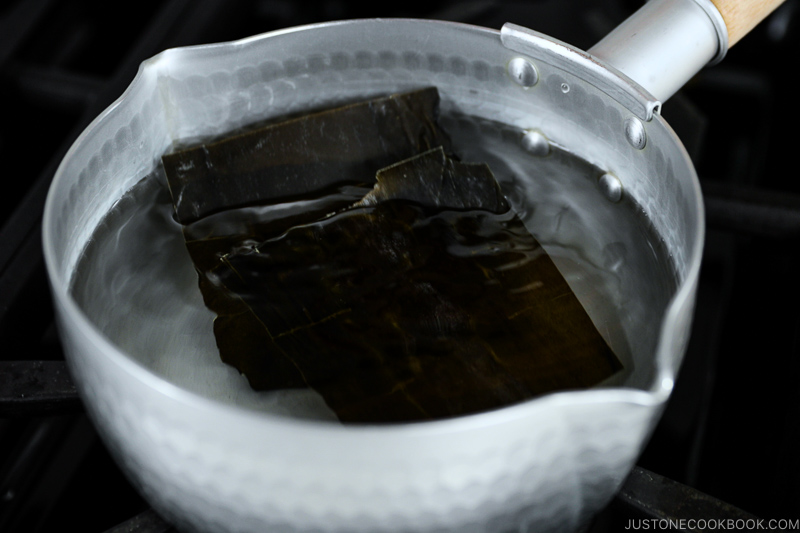
- Turn on the heat to medium low and slowly bring to almost boiling, about 10 minutes.
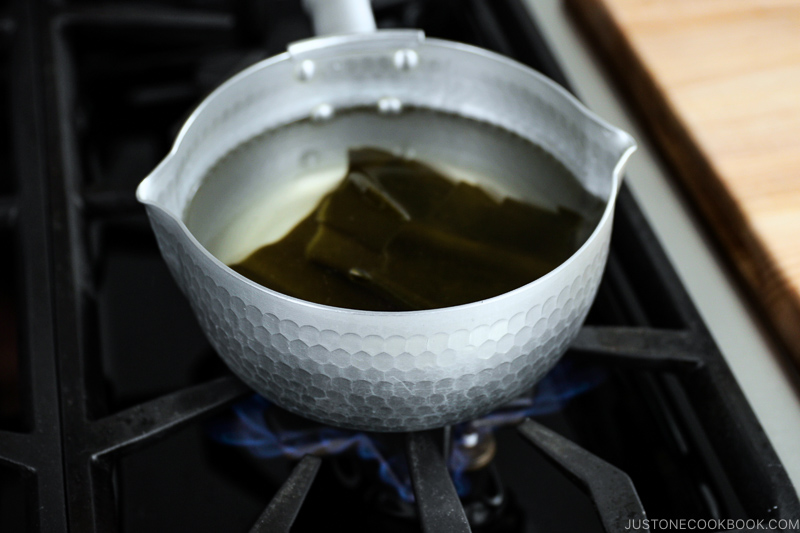
- Meanwhile, clean the dashi by skimming the foam and debris from the surface.
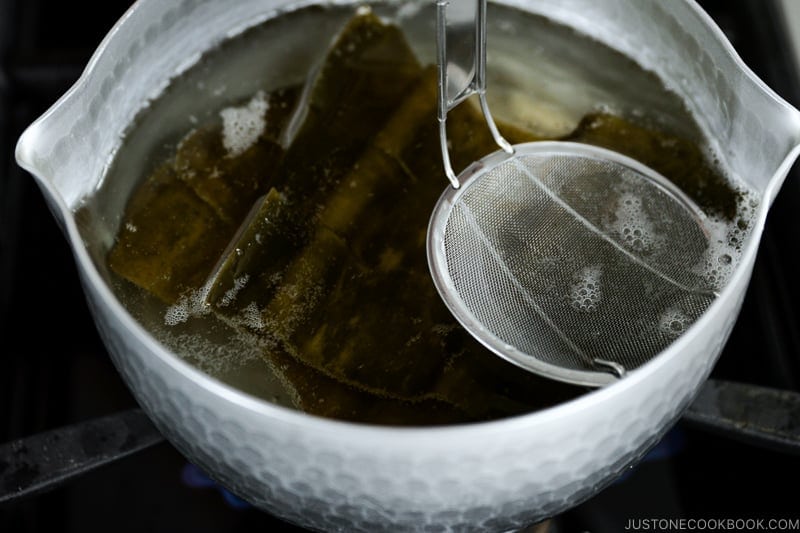
- Just before the dashi starts boiling gently, remove the kombu from the saucepan (discard or repurpose in other recipes—suggestions follow). If you leave the kombu in the saucepan, the dashi will become slimy and bitter.
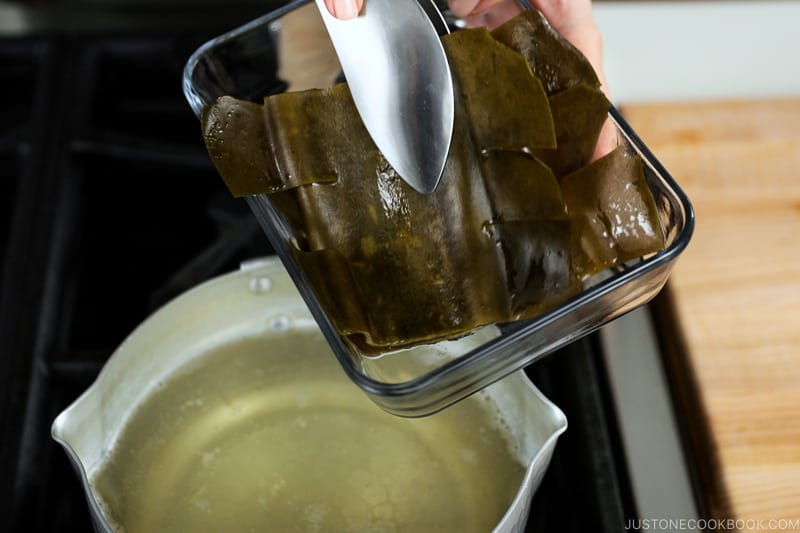
- Add 1 cup katsuobushi (dried bonito flakes) and bring it back to a boil again.
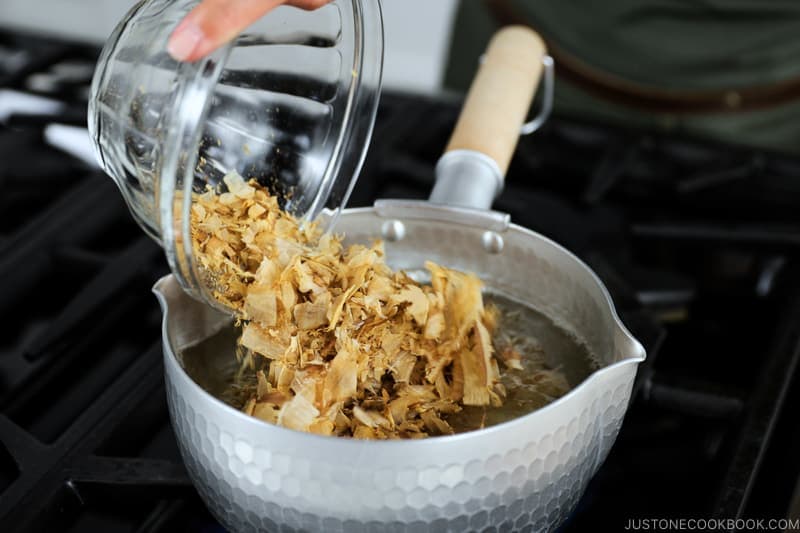
- Once the dashi is boiling, reduce the heat, simmer for just 30 seconds, and turn off the heat.
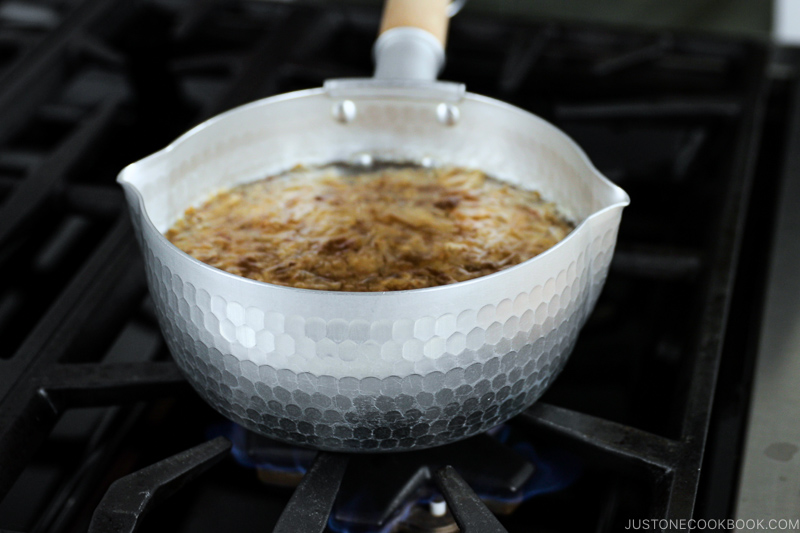
- Let the katsuobushi sink to the bottom, about 10 minutes.
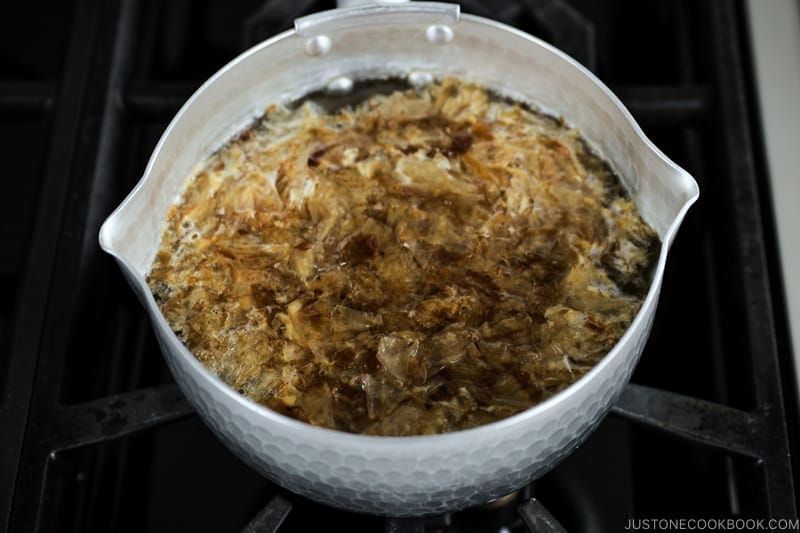
- Strain the dashi through a fine-mesh sieve over a bowl or measuring cup. Reserve the katsuobushi and repurpose it; see the suggested recipes that follow. The Awase Dashi is ready to use.
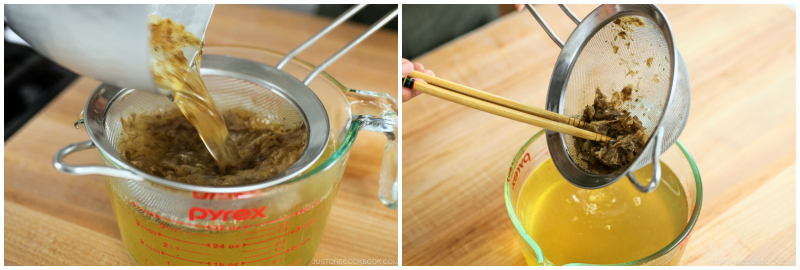
To Store
- If you are not using the dashi right away, store the dashi in a bottle or mason jar and keep it in the refrigerator for 3–5 days or in the freezer for 2 weeks.

What to do with the spent katsuobushi and kombu?
- Save the spent kombu and katsuobushi in an airtight container and store it in the refrigerator for a week or in the freezer for up to a month.
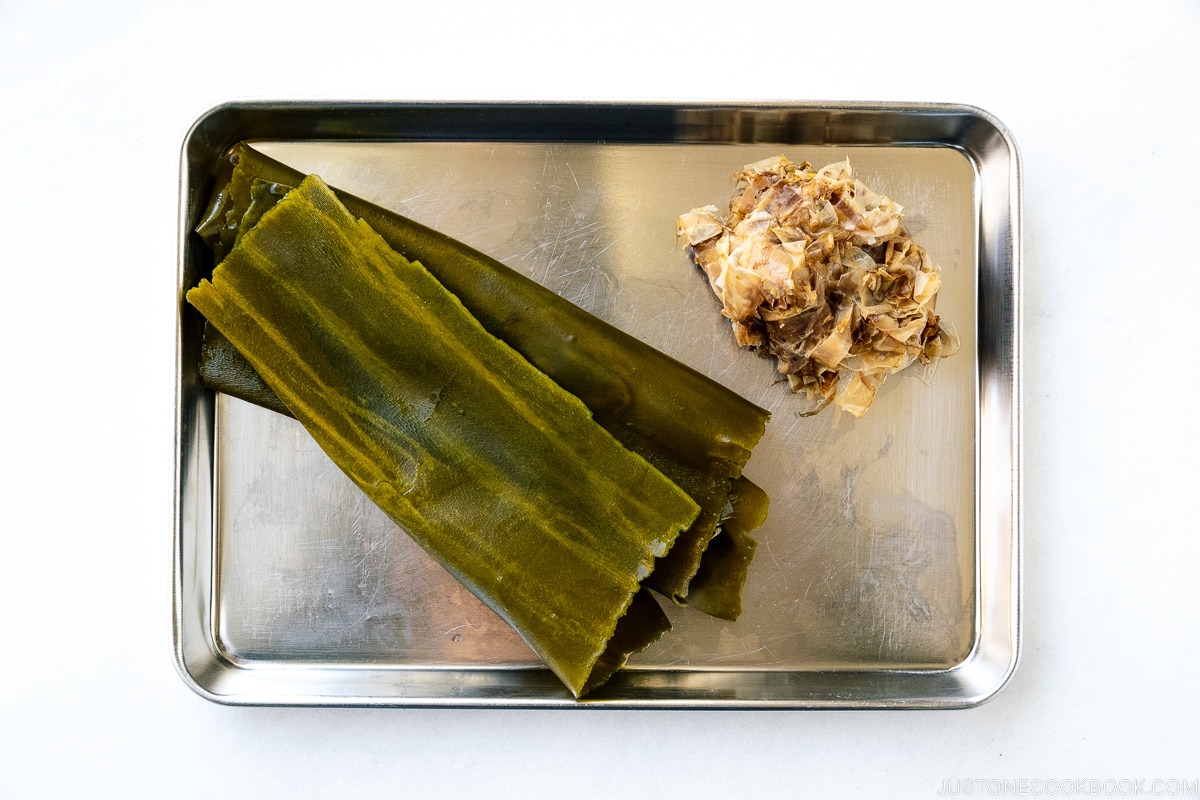
- With the spent kombu, you can make Simmered Kombu (Kombu Tsukudani).
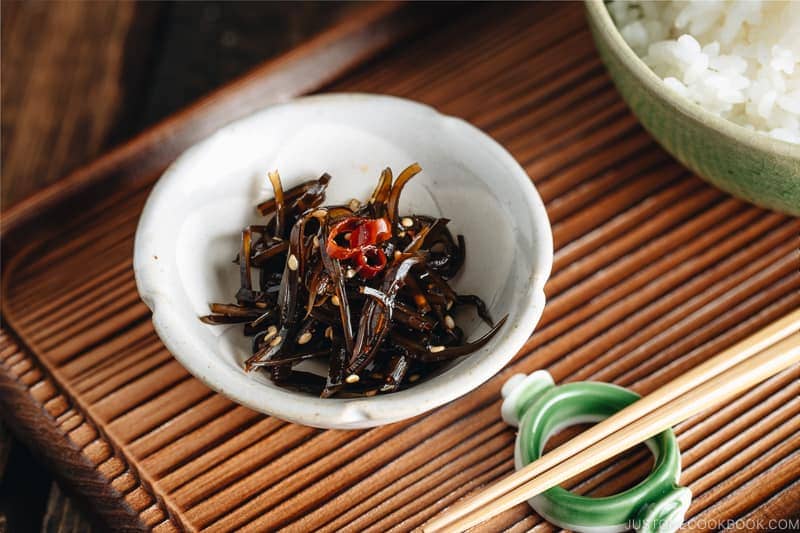
- You can also make Homemade Furikake (Rice Seasoning).
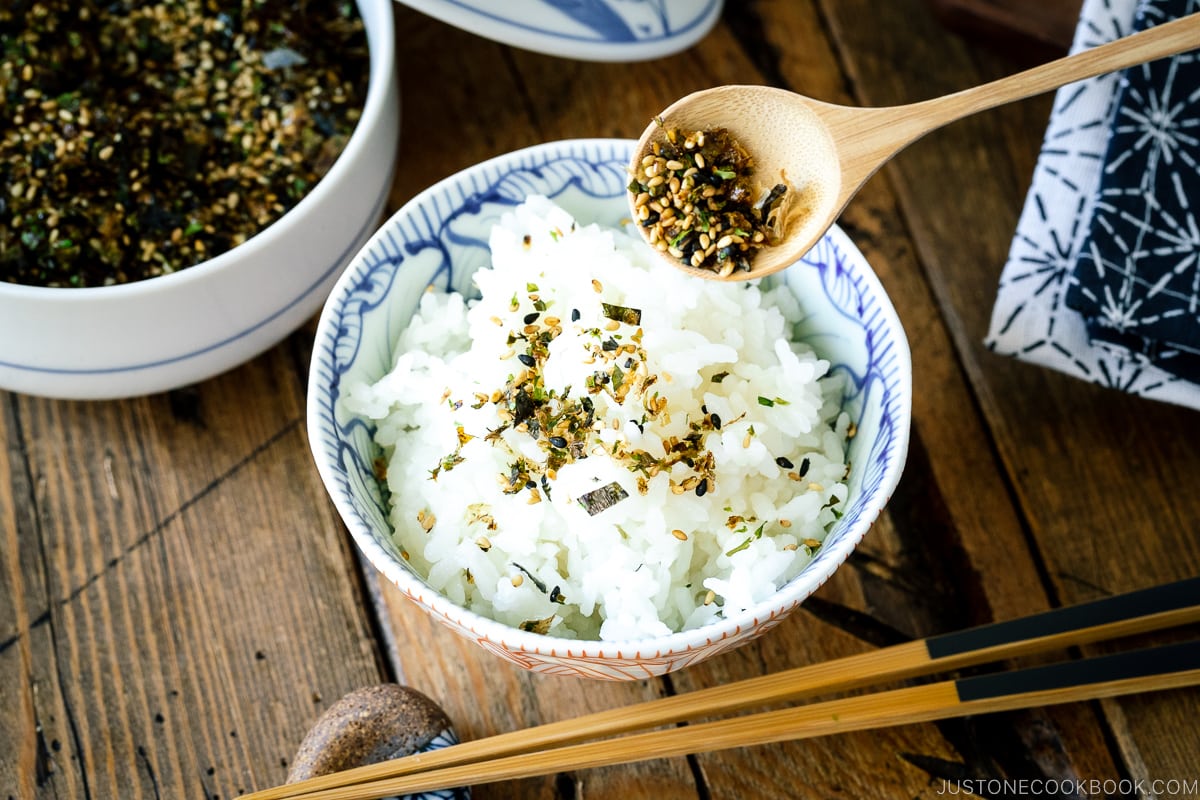
Optional: Niban (Second) Dashi
- In a medium saucepan, put 2–4 cups* of water and previously used kombu and katsuobushi from making the first dashi. Bring it to a boil over medium-low heat. *2 cups would make a stronger dashi.
- Remove the kombu just before the liquid comes to a boil, then lower the heat, and cook for 10 minutes, skimming occasionally.
- Add an additional ½ cup (5 grams) of fresh katsuobushi and turn off the heat.
- Let the katsuobushi sink to the bottom and strain the dashi through the fine-mesh sieve.
Nutrition
Editor’s Note: This post was originally published in January 2013. The images and content have been updated in April 2019.
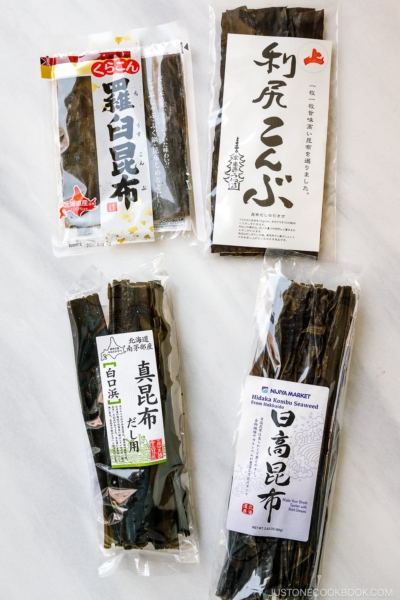
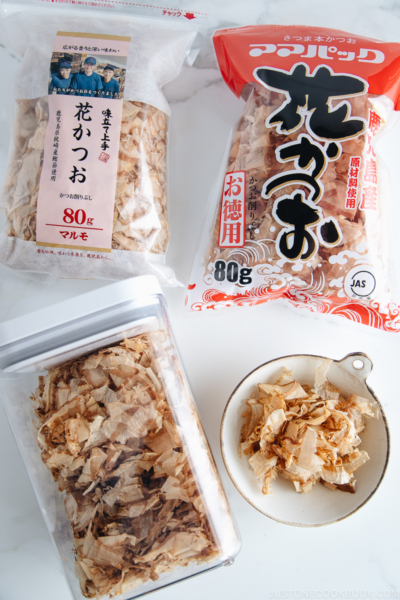
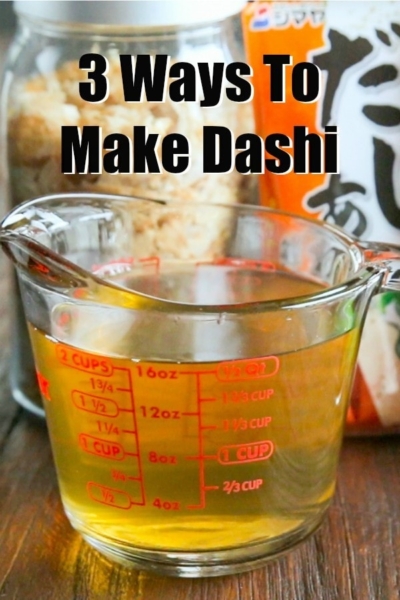
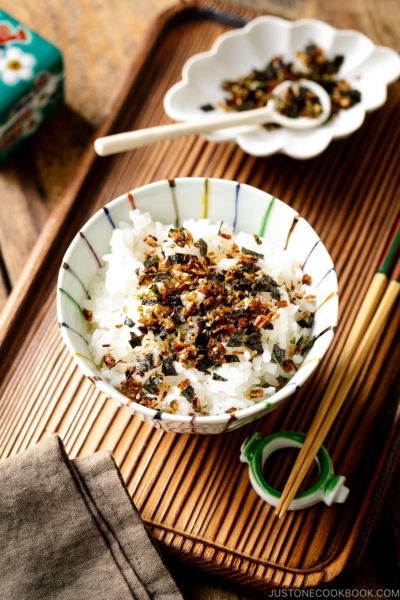
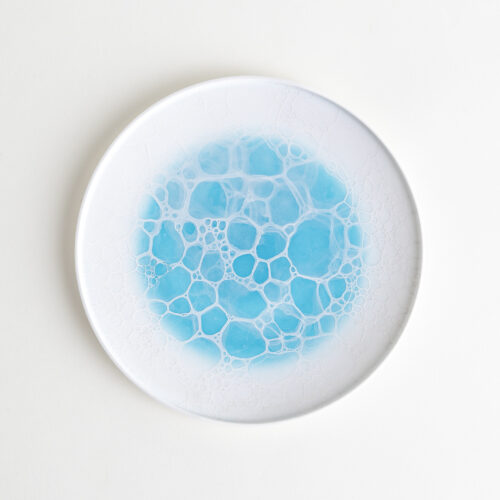
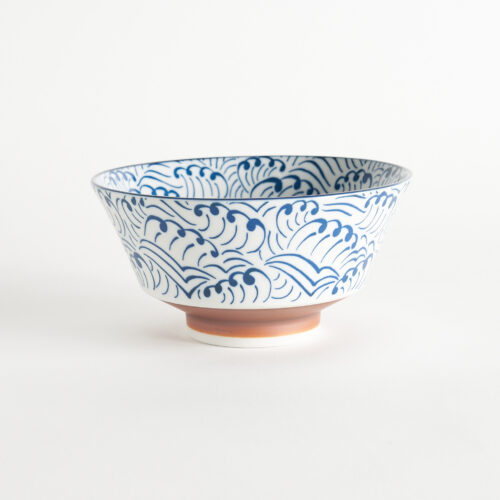
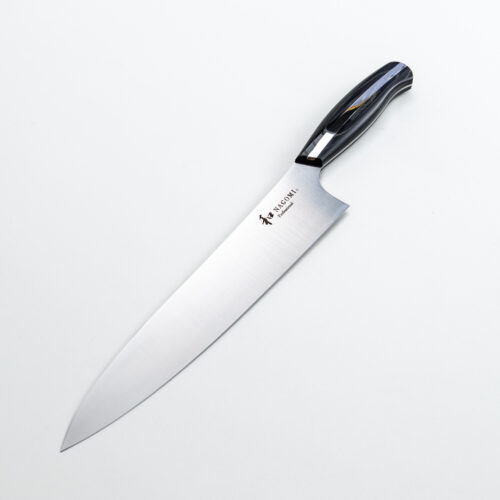
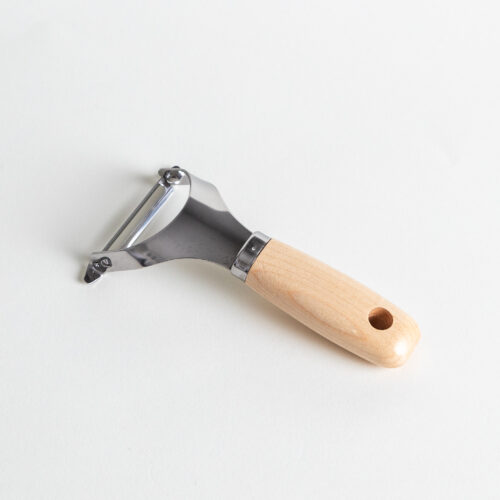
Hello can dashi stock be substituted for a recipe that calls for dashi powder? If so how much dashi stock would one use per tspn ofpowder?
Hi Noam, Thank you very much for reading Nami’s post!
It depends on the recipe, and the amount will be different. Some need to dilute, and some are just asking for powder.
Please let us know which recipe you are referring to, so we can help you.😊
Hi Nami! Love your blog, thank you! Quick question about the required quantity of Kombu. The recipe above says 10cm x 10cm of dried Kombu piece should be the same as 10g, but my 10cm x 10cm Kombu piece weighs a lot less. In fact I buy my Kombu from a Japanese store in a packet weighing 20g in total and that contains about 7 pieces of dried Kombu of about 10cm x 10cm each. So it seems the measurements don’t accord to the weight of each piece. Should I just use 10g of dried Kombu for 4 cups of water when making Dashi? Thanks!
Hi Nik, Thank you very much for reading Nami’s post!
The Kombu has different types, and weights and sizes are different. In this case, we recommend using the weight measurement. (However, different types of Kombu has slightly different taste. Please feel free to adjust the amount of kombu for your liking.)
Here, Nami explains about different types of Kombu: https://www.justonecookbook.com/kombu/.
We hope this helps!
Very concise instructions! Appreciated as always.
I had a question. Is the kombu supposed to be slimy even before it nearly boils? I tried to make four cups of dashi today, and the first batch I let go too long…you could see the slime coming off the seaweed when I took it out…
So I tried again, but after only about three or four minutes on low heat, with water still cold, I noticed the pieces were getting slimy again? They were still rough but I could feel that film, so I took it all out. I think it was too early, so it probably won’t be the best dashi. I just don’t understand why it keeps happening?
Hi Evvi, Thank you very much for reading Nami’s post and for your kind feedback!
It depends on the type of Kombu, it could be slimy even before it nearly boils, but umami is there. Ideally, it’s best to use a specific kind of Kombu for each recipe that requires a particular taste and texture.
Here is the post where Nami explains about different types of Kombu.
https://www.justonecookbook.com/kombu/
We hope this helps!🙂
hi quick question, in this recipe it says 1 cup of bonito flakes but in the video i believe it says 3 cups, which should i go with? i’ve been making it with 3 cups so far but bonito flakes are about $9 per bag where I am so if i could use less that would be great. thanks!
Hi Dan, Thank you very much for reading Nami’s post.
Using 3 cups of Katsuobushi will create a deep, delicious taste and amazing. However, you can use just 1 cup of Katsuobushi and Kombu to make Awase Dashi.
To make Katsuo dashi, we recommend 2 cups of Katsuobushi as listed in the recipe card. (Nami’s video also shows the exact amount.)
https://www.justonecookbook.com/katsuo-dashi-bonito-stock/
We hope this helps!
yes that does help, thanks so much! I have been using dashi and niban dashi to make miso soup and it’s so delicious and satisfying. It feels like a form of meditation to make and strain the dashi and then reuse the same ingredients. I have been making it with kombu soaked overnight and katsuobushi, so I think from now on I will stick to just 1 cup katsuobushi. The miso paste will also add a lot of flavor. If I use the dashi for something else like an udon soup I might try adding additional cups of katsuobushi. Thank you again for responding!
Hi Dan! My pleasure!
Awesome choice! Yes, please feel free to add an extra cup of Katsuobushi for the delicate dish!
Hello, Nami.
I tried making awase dashi following this guide.
When my cold-brew kombu dashi started to boil, I added katsuoboshi and dashi almost instantly became bitter (both in smell and tase) and very dark in color (brown-orange, something like liqor or cognac).
I know for a fact that the colb-brew kombu part was alright (I used some of it the day prior for miso soup), and katsuoboshi was freshly opened (the bag was properly sealed and filled with gas).
Do you have any clue about what happened? Thank you in advance.
Hi Eugene, Thank you very much for trying Nami’s recipe!
Katsuobushi has many different kinds, and we think you got the one that has more dark meat.
Please check this link where Nami explains about Katusobushi. https://www.justonecookbook.com/dried-bonito-flakes-katsuobushi/
If you don’t like your Katsuobushi, we recommend using it for other dishes like Okonomiyaki, etc.
We hope this helps.
Thanks for our reply.
Currently, I am even more confused – after a night in the fridge the bitterness is almost entirely gone.
Hi Eugene, We are glad to hear the bitterness is gone.
It probably got mild when mixed with the Umami from Kombu.🙂
I have been experimenting a bit more and got an idea:
Could boiling kombu dashi affect the taste?
On my first attempt at miso soup, I did not let the stock (cold-brew kombu dashi) to boil, only got it to the point when small air bubbles start appearing on the bottom of the pot, and the guide for kombu dashi specifically says to only get it to almost boil -‘Turn on the heat to medium-low heat and slowly bring to almost boil, about 10 minutes’.
That was my most successful attempt so far, no bitterness, getting closest to what I tasted in a restaurant.
On my second attempt I tried to make awase dashi usding cold-brew kombu dashi from my previous attempt. However, since the guide for awase dashi specifically says to boil the stock after adding katsuobushi ‘Once the dashi is boiling, reduce the heat, simmer for just 30 seconds, and turn off the heat’, I let it reach boiling. That attempt gave me very bitter stock, but bitterness mostly subsided after a night in the fridge.
On my third attempt, I used cold-brew kombu again, and accidentally let it reach boiling, but instantly removed the pot from the stove. In the end, only a little bit of bitterness was present and it did not negatively affect the soup.
So, is it possible that boiling kombu dashi produces this bitterness?
Hi Eugene, Thank you very much for reading Nami’s post and sharing your experience with us.
The Umami flavor from Kombu, Glutamic acid, is easily extracted when the water temperature is under 158F (70C) water. That is why your first attempt Dashi tasted no bitterness and mild. If the water temperature goes up more than that, the Alginic acid will start to dissolve in the water, and it will make the Dashi slimy and change the Umami flavor. We are not sure what types of Kombu you used, but there are different types of Kombu in Japan, and each type has slightly different flavors and textures. (https://www.justonecookbook.com/kombu/)
So the bitterness on your second attempt could be from the type of Kombu you used or from Katsuobushi.
Your third attempt Dashi may contain the Alginic acid due to reaching the boiling temperature for a while and change the Umami flavor (You might taste it’s as bitterness.). Or the bitterness from the type of Kombu you used.
We hope this helps to solve the mystery.🙂
Nami thanks for your video on how to make dashi.
I have had the kombu and bonito flakes in my cupboard for more than one year and didn’t know what to do with them and now I do.My question is, after making the dashi, what do you do with leftover kombu & bonito flakes?I would rather use them somehow or do you just throw them away?
Also, can you store dashi? Like freeze it or just make it fresh everytime?
Hi Julie, Thank you very much for trying Nami’s recipe and for your kind feedback.
The used Kombu or Bonito flakes from dashi can be made into Homemade Furikake; https://www.justonecookbook.com/homemade-furikake-rice-seasoning/
or Tsukudani; https://www.justonecookbook.com/simmered-kombu-tsukudani/
We recommend making dashi each time, but it can be freeze in an airtight container for up to 3 weeks.
We hope this helps, and you can enjoy them in many ways.
Excited to try this! Can you make furikake from the reserved katsuobushi and kombu from the niban dashi? I try to be as zero-waste as possible.
Hi Isabella, Thank you very much for asking! Nami has recipes for used Katuobushi and Kombu.
https://www.justonecookbook.com/simmered-kombu-tsukudani/
https://www.justonecookbook.com/homemade-furikake-rice-seasoning/
We hope this is helpful.🙂
Thank you so much for this, Nami!
My father used to take business trips to Japan when I was a child and when he returned he found the most authentic Japanese restaurant in our city to take me too. I fell in love with the cuisine and Japanese food is comfort food for me! With your recipes, I can share this with my own daughter!
Your dashi recipes are so easy to understand and easy to make once I found the ingredients. Kombu was actually the hardest to find! Now I can make dashi for many dishes throughout the week.
Thank you again! ❤️
Hi Carissa!
Aww.💞 Thank you very much for sharing your story with us. It’s heartwarming to hear how much joy and excitement Nami’s recipe has brought to you!
Thank you for trying recipes and for your kind feedback.☺️
Hi Nami,
Humble JOC disciple here, thank you for all that you do.
Last year in Japan I picked up a kezuriki and a block of (unshaved) katsuobushi for the purpose of making dashi at the granular level, truly from scratch. I’m also a kombu snob and I always bring back and esoteric assortment from various michinoeki I visit in my travels.
My question is this: Do you have any experience (or interest for that matter) in shaving your own katsuobushi? And if so, perhaps you know how to use a kezuriki properly. So far, my ‘shavings’ have come out looking more like wood chips better fitted for mulching a bed of rose bushes than for accentuating a dashi.
Any insight you may have would be appreciated!
Hi Brian!
Thank you very much for supporting us!
The majority of home cooks in Japan don’t shave their own katsuobushi and use good quality katsuobushi instead. Luckily in Japan, that option is available but living outside makes it hard to find better quality katsuobushi. Due to its inconvenience and the cost for the amount she needs, she doesn’t own the shaving tool. However, she would be interested in providing delicious dashi for clear soup or on a special occasion.😉
You may find good youtube videos on how to shave it correctly, but here’s one (you may use chrome to translate). https://www.ninben.co.jp/katsuo/kezuri/
We hope this helps!
Any reason why katsuoboshi s not simmered for a longer time?
Hi Chee,
It is to enjoy the best balance of fragrance and taste of Katsuobushi. So we don’t recommend simmer too long or leave it too long in the dashi.
I hope this answers your question.
Nami,
I would like to make dashi shyou and use that instead of using straight shyou since it is more flavorful. Dashi shyou can be pretty expensive at the store and that is why I am looking to take the DIY route. I have dashi kombu, dashi katsuobushi and shyou. I looked on justonecookbook but have not been able to find a recipe. Could you steer me toward a great recipe?
Luna
P.S. How is the recovery going from your shoulder surgery?
Hi Luna! Thanks for asking about my shoulder recovery. It’s going well; lots of PT exercises at home so I can go back to kitchen soon!
For Dashi Shoyu, you can make 1 part soy sauce, 1 part mirin, and add katsuobushi and kombu.
Thanks for the great recipe. I followed it exactly and came out with perfect results. Appreciate you sharing your knowledge and helping me crack into Japanese cooking basics.
I used it to make a Ramen with fresh chicken, green onion, and forest mushrooms. It was wonderful.
Now I’m off to make my Niben Dashi. 🙂
Hi Ogrejelly! Thank you so much for trying this recipe! I’m glad it came out well and you enjoyed it with ramen recipe. 🙂
Thank you for sharing.
In the 3rd step of niban dashi (Add an additional ½ cup (5 grams) katsuobushi and turn off the heat.), are the 5 additional grams previously used katsuobushi from making ichiban dashi, or fresh unused ones?
Hi Irene! Sorry it wasn’t clear. It’s fresh unused ones. I’ll mention that in my recipe. 🙂
Hello Nami,
I love your recipes and own your e-cookbook. I’ve used the recipes for ramen and dashi several times and plan to try other recipes as well.
To be clear, on step 5 after adding the katsuobushi, do we bring it to a boil again slowly as with the kombu? I’ve tried both quick and slow boil, but can’t remember a difference.
Thank you!
Hi Dan! Thank you so much for using my recipes! 🙂
On step 5, we bring it to a boil with just katsubobushi only. Since it was already boiling when you add katsuobushi, it’s only a few seconds it starts boiling again. Kombu already did enough job and retired at Step 4. You can discard it or use it for other recipes (scroll down more to the bottom of the recipe).
Hi Nami!
Can we still use the kombu and katsuoboshi from Niban Dashi to make furikake?
Thanks for sharing the dashi recipes, so easy and so tasty!
Hi Marilyn! Yes, you can. Mostly the leftover from Ichiban or Niban Dashi has no taste, we used them for texture and don’t want to waste the ingredients. I’m so glad you like the dashi recipe! 🙂